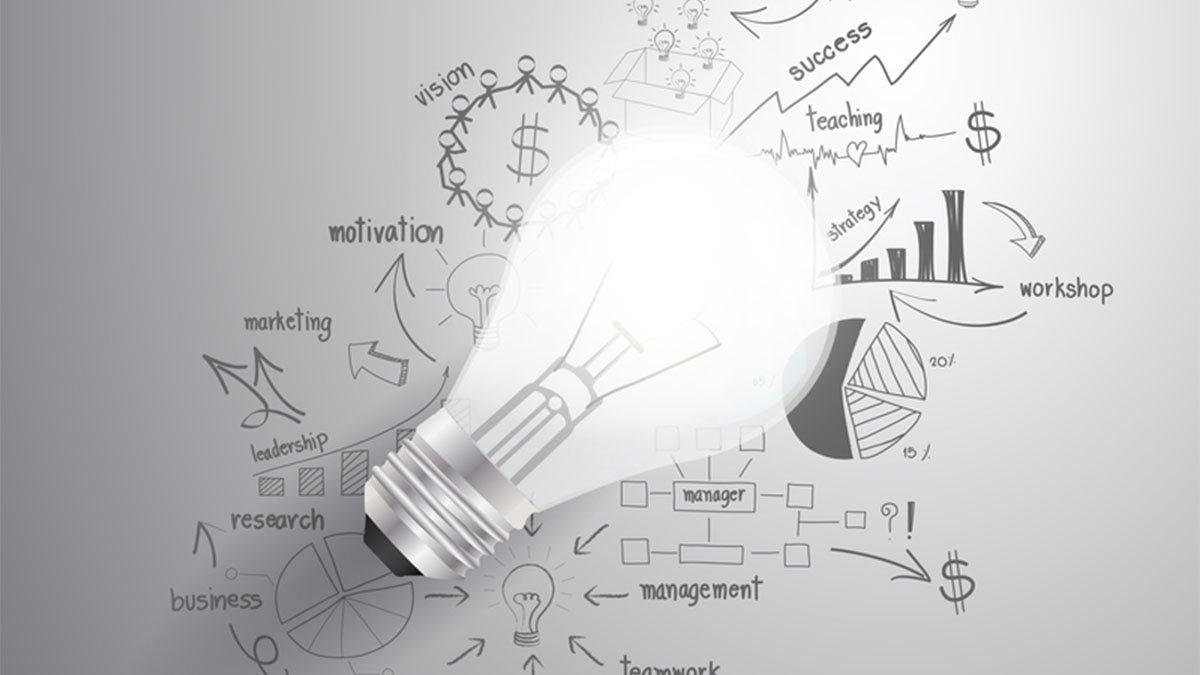The market has gradually shifted to a zero-touch economy, unmanned production, and unlimited applications in response to the challenges of the times and the epidemic.
What is a zero-touch economy?
In the post-epidemic era, the economy will move towards new trends: "zero-touch economy"-telemedicine, digital courses, remote office; "unmanned production"-automated production, robotic warehousing, and logistics, "unlimited applications"-precision Medical care, artificial intelligence, smart cities, and transportation. Among them, the zero-touch economy has grown most prominently during the epidemic. According to research, the output value of the four major remote industries, including telemedicine, learning, work, and delivery, will grow by 80% within five years, reaching NT$16 trillion. Under the pressure of the epidemic, many things that were considered impossible in the past have become possible.
COVID-19 has plunged the world into a global recession, resulting in the development of a zero-touch economy. Whether zero-touch technology or services can bring real economic benefits to users or the market depends on whether technological innovation and value-added can shorten the time and space distance between people and things in the zero-touch economy. ITRI and ISTI have proposed a framework plan for four innovation models for "zero-touch economy, zero-distance innovation" to assist the industrial industry in exploring its own advantages and formulating strategies suitable for current challenges. It is hoped that after the epidemic, with the help of agile supply chains, concentrating on exquisite technology, and digitally innovative business models, the industry can obtain new market opportunities from the crisis.
A zero-touch economy requires zero-distance innovation
In order to curb the spread of the COVID-19 epidemic, governments around the world have adopted control policies such as travel bans. Although these measures have controlled the epidemic to a certain extent, the restrictions on global population movement have led to shortages of labor and parts in factories and disrupted the global supply chain is hindered, business face-to-face interaction is hindered, and sales in many industries, such as consumer products, automobiles, and pharmaceuticals, are reduced. The loss of mobility and employment has also restrained spending and has affected many service industries such as air transportation, overseas education, travel, entertainment, hotels, consumer goods, and luxury goods. COVID-19 has caused a sharp decline in the global economy, closing many factories and businesses, but it has also led to a zero-touch economy business model. For a long time to predict the future, zero-touch technology or services may create substantial economic benefits for users or the market, and success depends on technological innovation and value-added, whether it can effectively shorten the time and space between distance of people or zero contact with objects in the economy.
What are the zero-distance innovation models?
Four pillars of zero distance innovation to accelerate industrial transformation
Various industries in Taiwan advocate the concept of HQ economics when thinking about the new blueprint for global logistics. Intelligent and resilient enterprises realized through digital transformation will be able to respond to COVID-19 and unknown challenges in the future with better agility and resilience to mitigate disadvantages impact.
Another trend is the innovation framework of "zero-touch economy, zero-distance innovation" to create a secret innovation weapon for agility, focus, and digital transformation so that the industry can turn crises into opportunities. The idea of a "zero-touch economy, zero-distance innovation" is to integrate digital technologies to provide immersive experiences and cross-industry business models to provide services for remote users. The distance is shortened through cloud technology, and cross-domain experience and services are provided through O2O (online to offline) integration.
Zero Distance Innovation Mode 1: Space Innovation
In order to control the spread of COVID-19, various mainstream remote models, such as remote work, telemedicine, food, and beverage delivery, online games, and online education, have become one of the solutions for today's enterprises.
In the beginning, the public must accept the "space innovation" of the "zero-touch economy" to avoid the spread of the virus. However, the influx of a large number of users at the same time paralyzed some online platforms and became a stress test of various systems, testing the load level of the system, and issues such as information security and user experience. Internet service providers are eager to adjust related software and hardware, improve individual service processes and website structure, etc., such as using online broadcast or conference applications, in order to solve business meetings, international forums, school lectures, etc. It replaces the traditional online teaching method, based on non-real-time streaming to make distance learning widely used, which is the so-called "zero distance space innovation."
Zero Distance Innovation Mode 2: Operational Innovation
Operational innovation is a familiar viewpoint in the market. With intelligent automation, unmanned vehicles and intelligent customer services will gradually replace part of human services. In this way, zero contact can also be achieved, and products and services can continue to be provided during the epidemic.
In the past, the cost of introducing related mechanisms such as industry 4.0 or smart customer service was too high for smart factories, and the threshold of technology and cost prevented smart system services from entering small and medium enterprises.
Today, driven by the epidemic, the technological development of smart boxes can assist manufacturers in collecting production process data and statistics, remotely monitoring and operating factories, and communicating between workstations as part of smart manufacturing to adjust production decisions at any time, Improve the flexibility and timeliness of production. Booking and ordering on the cloud platform, combined with mobile payment can ensure that customers enjoy a safer, more convenient, and more hygienic experience.
This kind of zero-distance operation innovation also needs government assistance to accelerate the immediate transformation during the crisis, not only for the health and safety of the people but also to assist the transformation of various industrial services.
Zero distance innovation model 3: service innovation
In order to control the spread of the virus, various institutions and public places have installed relevant equipment to monitor the body temperature of all visitors. Although the thermal image sensor is already a zero-contact application, its technical capabilities are limited, and there will still be congestion during peak crowds, which will increase the risk of virus transmission.
Therefore, the Industrial Technology Research Institute immediately put in manpower and is transforming its infrared image sensing and detection technology used in the smart home care of the elderly into thermal imaging technology. This technology will solve current pain points, is suitable for abnormal body temperature of the public and anti-virus applications, and is suitable for indoor and outdoor dynamic measurement of multiple people. This zero-distance service innovation will be quickly used to detect and prevent the spread of viruses, and to provide support for future innovations and applications.
Zero Distance Innovation Mode 4: Industrial Innovation
One of the biggest economic victims of the epidemic is tourism operators, and all sightseeing and tourism activities have almost ceased. In the face of such a crisis, some businesses are constantly looking for new business methods, such as the introduction of intelligent customer service and digital marketing to achieve operational innovation. By providing a sightseeing experience at distant tourist attractions, using a 360° panoramic camera or a real-time streaming platform can create "spatial innovation". Promotion of local specialty products through e-commerce platforms or tools can reach non-travel consumers. This kind of service innovation can help the tourism industry maintain customers and maintain operations.
In the face of the epidemic, if services and supply chains lack flexibility, they will be severely hit. In response to this challenge, it is also an opportunity to reshape the industry positioning and zero-distance “industrial innovation”. It will create new sources of income and enhance business flexibility. When the next disaster or disaster strikes, the industry will be more prepared and able to use opportunities as opportunities to reshape risks.
Zero-touch economy and zero-distance innovation will become economic trends, innovation frameworks, and new lifestyles after COVID-19. In fact, the Industrial Technology Research Institute (ITRI) predicts that this will happen by 2030, and the epidemic has accelerated the process of application deployment and the emergence of new lifestyles. In the context of the "zero-touch economy" and "zero-distance innovation" industries, ISTI makes the following recommendations to Taiwanese companies and industries:
The zero-touch economy can only impress consumers through zero-distance innovation, thereby shortening the distance between each other through mixed reality and providing a complete cross-domain experience and service, thereby profiting. Companies should immediately achieve a zero-contact economy and zero-distance innovation through transformation, effective risk management, and innovative technologies to achieve sustainable development. This will enhance the company's industrial competitiveness and survivability. The era of 10x speed has arrived, but there is no need to start from scratch, nor to have all the tools or assets related to innovative technologies. Collaboration with existing resources has replaced solos and silos. Timeliness is always more important than perfection.
Finally, apart from the innovation of business strategies and business models, human resources are the most important asset and core value of each industry. At this difficult time, companies should invest in talents through training, rotation, and support programs to enhance employees' key capabilities in digital transformation. Through training, support, and rotation plans, employees are kept proactive and ready to act. In the process of restructuring the industry in the pandemic, the originality of zero-distance innovation that supports the realization of a zero-touch economy will see successful upgrades and transformations. It will enhance the company's flexibility and enable the company to maintain its leading position in fierce competition.



.jpg)









.jpg)
.jpg)